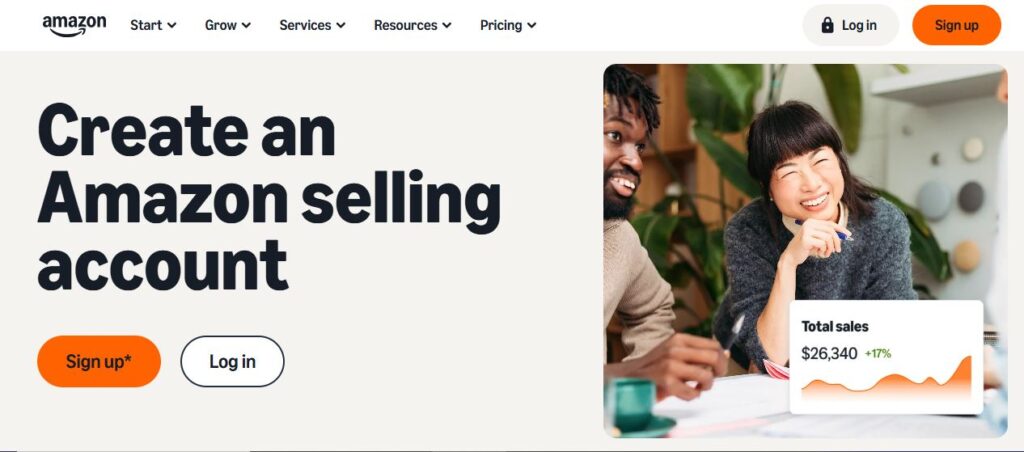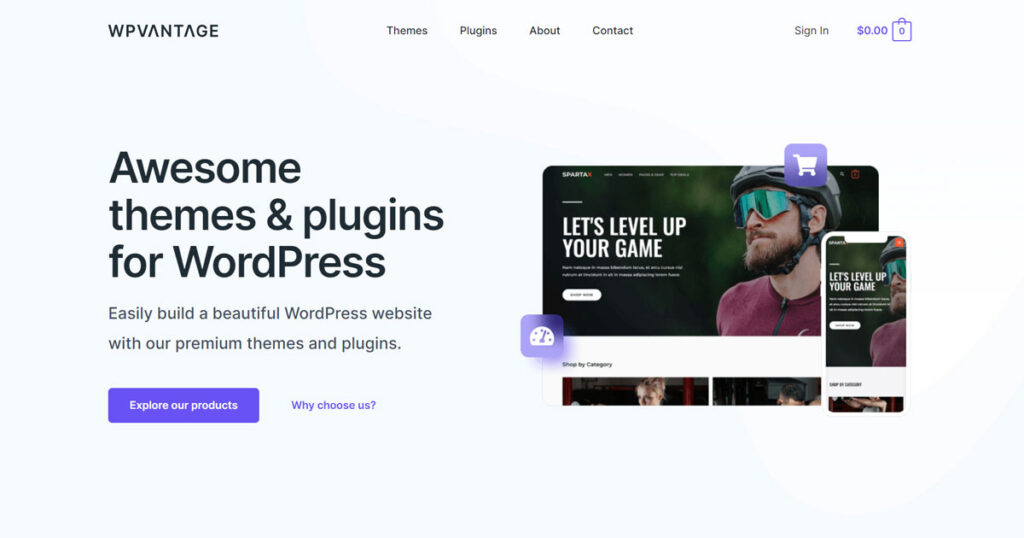What is Amazon FBA and How Does it Work
Ever wonder why all these small businesses are able to sell and ship products perfectly on Amazon without ever having to do any storage, packing, or shipping themselves? That’s what Amazon FBA is. FBA, short for Fulfillment by Amazon, basically means paying Amazon to be your own personal warehouse, packer, and shipping crew. Sellers send their products to Amazon warehouses and Amazon takes care of the rest from storing and boxing them up to shipping and customer service.
Here in this article, we will decode what Amazon FBA is, how it operates, its pros and cons, its price, and how you can start. If you are a curious who has an aspiration of starting an online business, this guide will keep everything in simple terms.
FBA vs. FBM: What’s the Difference?
Before start learning about FBA lets learn how other models of Amazon. As amazon offers two primary fulfillment methods: Fulfillment by Amazon (FBA) and Fulfillment by Merchant (FBM). With FBA, you send your products to Amazon’s warehouses, and they handle storage, packing, and shipping to customers. This gives you access to Amazon’s Prime members and saves you time on logistics. On the other hand, FBM (Fulfilled by Merchant) allows you to store and ship products directly to customers from your own location, giving you more control over inventory and shipping processes. Both methods have their pros and cons depending on your business goals, volume, and budget.
Which is better? If you want convenience and scale, go with FBA. If you want more control and lower fees, FBM may be the way.
What is Amazon FBA?
Amazon FBA means Fulfillment by Amazon. In simple words, it’s a service where the sellers ship their products to Amazon’s storage centers, and Amazon manages the storage, packaging, shipping, and even customer support.
Think of it this way: if you had a lemonade stand. Instead of squeezing the lemons, serving the drinks, and making change yourself, you hire a team to do all that and you just arrange for the lemons to be delivered. That’s Amazon FBA—it does the busy work so you can focus on finding great products to sell.
How Does Amazon FBA Work Step by Step?
To understand how FBA works, let’s go step by step:
Inventory: You buy inventory from brands.
Send Products to Amazon: You ship your inventory into Amazon’s fulfillment centers.
Amazon Stores Them: Your goods sit safely in Amazon’s massive warehouses.
Customer Places Your Product Order: Someone buys from your Amazon listing.
Amazon Packs & Ships: Amazon selects the item, packages it, and ships it to the consumer.
Customer Service & Returns: If there is an issue, Amazon offers customer support and returns.
In short: you focus on selling, while Amazon takes care of the heavy lifting.
The Benefits of Using Amazon FBA
Why do so many sellers love FBA? Here are some key benefits:
Prime Eligibility: Products under FBA automatically qualify for Amazon Prime’s 2-day shipping, making them more attractive.
Less Work for Sellers: No need to pack, ship, or manage storage.
Better Customer Trust: People trust Amazon’s reliable delivery and return policies.
Scalability: Whether you sell 10 items or 10,000, Amazon can handle it.
The Drawbacks of Amazon FBA
FBA is not perfect always. Here are some downsides of Amazon FBA:
Storage Fees: Now lets say you sent inventory to Amazon fulfillment center and If your products are in center and don’t sell quickly, so that can be problem amazon will ask you to pay for warehouse space.
Less Control: Customer orders form your listing but you cannot personally check every package before it ship as it is managed by Amazon.
Competition: Million of sellers use FBA, and competing each other with prices etc. So consider competition is high but not impossible.
Returns: Amazon’s customer-friendly return policies can sometimes hurt sellers. What does it mean? means that even small package damage will and return request without any question asked. Amazon always take care of its customers not sellers.
Amazon FBA Costs Explained
Amazon FBA is not free. Here is what you will pay if you want to use FBA Model.
Fulfillment Fees: Charged per unit sold for picking, packing, and shipping.
Storage Fees: Monthly fees based on the space your inventory takes up.
Long-Term Storage Fees: Extra charges if products sit too long in warehouses.
It’s important to calculate these costs before deciding if FBA works for your business model.
Who Should Use Amazon FBA?
FBA works best for sellers who want to offer fast, reliable shipping and gain access to Amazon Prime’s 2-day delivery, which can significantly boost sales by attracting more customers. It’s also ideal for business owners who prefer to focus on growing their brand instead of dealing with the complexities of logistics, such as packing, shipping, and managing returns. Additionally, FBA is perfect for entrepreneurs looking to scale their online stores, as it allows them to easily handle large order volumes without the need to invest in warehouse space or additional staffing. By outsourcing the fulfillment process to Amazon, sellers can focus on expanding their product offerings and reaching a broader customer base while Amazon handles the heavy lifting.
But if you sell oversized items, custom-made goods, or prefer to control packaging, FBA might not be ideal.
How to Start with Amazon FBA
Getting started is easier than you think. Here’s a roadmap:
1: Create an Amazon Seller Account
2: Choose products you want to sell.
3: Prepare your products (labeling and barcoding).
4: Ship inventory to Amazon’s warehouses.
5: List your products on Amazon Marketplace.
6: Start selling!
Amazon even provides tools and tutorials to guide new sellers through the process via Amazon seller university.
Don’t risk your new Amazon store — 80% of new accounts fail from tiny mistakes.
One overlooked field, one wrong document, one moment of uncertainty and Amazon suspends your account. We create accounts the right way the first time.
Tips for Succeeding with FBA
Want to increase your chances of success? Here are some tips:
Research Products Carefully: Don’t just sell what you like, sell what customers want.
Price Competitively: Use Amazon’s pricing tools to stay competitive.
Keep Stock Levels Healthy: Running out of stock can hurt your rankings.
Invest in Quality Listings: Great photos and clear descriptions boost sales.
Common Mistakes to Avoid in FBA
New sellers often make these mistakes:
Ignoring Fees: Not accounting for fulfillment costs can eat into profits.
Choosing Oversaturated Products: Too much competition can crush beginners.
Poor Product Quality: Cheap products lead to bad reviews and returns.
Neglecting Marketing: Simply listing on Amazon isn’t enough you need ads and promotions.
Can You Really Make Money with Amazon FBA?
Yes, many sellers earn full-time incomes using FBA. But it’s not “easy money.” Success depends on:
Choosing the right products:
Selecting the right products to sell is the foundation of a successful FBA business. You need to focus on products with high demand but low competition to maximize your chances of making consistent sales. Conduct thorough market research, analyze trends, and understand what customers are searching for. Tools like Jungle Scout or Helium 10 can help you identify profitable niches and analyze competitors. Remember, the products you choose should also align with your brand, have good margins, and be lightweight enough to avoid hefty shipping fees.
Managing costs and pricing:
FBA may seem like an easy solution, but the fees can quickly add up. You’ll need to factor in Amazon’s referral fees, storage fees, fulfillment fees, and any additional advertising costs. Effective pricing is crucial to maintaining healthy profit margins while staying competitive in your market. To succeed, you must constantly monitor and adjust your pricing strategy based on market conditions, competitor pricing, and Amazon’s fee structure. You also need to account for the cost of sourcing products, packaging, and any promotions or discounts you may offer.
Marketing and promoting listings:
Simply listing products on Amazon won’t guarantee success. Marketing and promotion are key to getting your products in front of potential customers. Amazon’s A9 search algorithm prioritizes listings with high-quality content, good reviews, and relevant keywords. Optimizing your product titles, descriptions, and images is essential for ranking higher in search results. Additionally, leveraging Amazon’s internal advertising system, such as Sponsored Products or Sponsored Brands, can help increase visibility and drive traffic to your listings. Outside of Amazon, promoting your products through social media, email marketing, and influencer partnerships can also give your listings the boost they need.
Some people treat it as a side hustle, while others build full businesses around it.
Examples of Successful FBA Businesses
Plenty of entrepreneurs have built amazing businesses using FBA. For example:
- A couple selling kitchen gadgets grew from $500/month to six figures annually.
- A student reselling books and electronics made enough to pay off college debt.
- Small brands use FBA to reach global audiences they couldn’t otherwise serve.
These stories show that with strategy and persistence, FBA can be very profitable.
Is Amazon FBA Worth It in 2025 and Beyond?
The e-commerce world keeps changing, but Amazon FBA remains one of the best tools for online sellers. With Amazon’s massive customer base, fast shipping, and trusted brand, FBA continues to be worth it for many businesses.
However, rising competition and fees mean you must plan smartly and keep evolving.
Conclusion
Amazon FBA is like having Amazon as your business partner—handling the tough parts of selling while you focus on finding and marketing products. It’s not perfect, but for many, it’s a game-changer. Whether you’re new to e-commerce or already selling online, FBA could be the key to scaling your business and reaching more customers.


